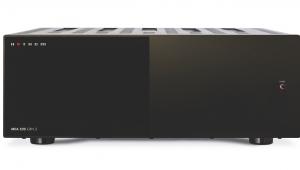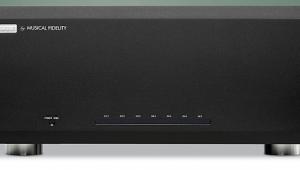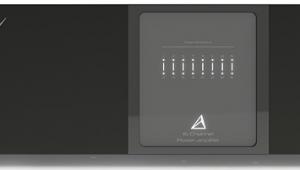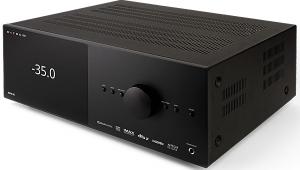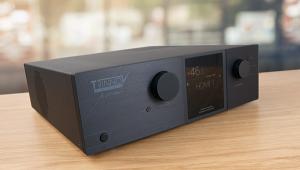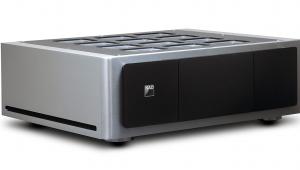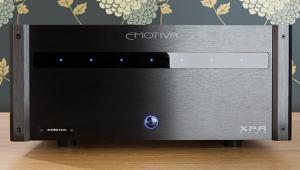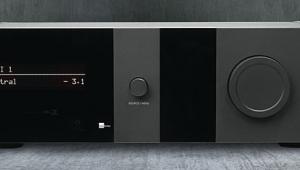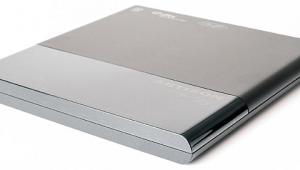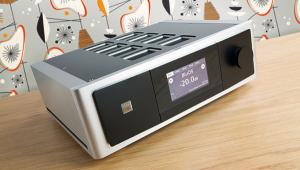Focal Astral 16 processor/amp review

 Steve Withers dabbles in astral sound projection with Focal’s 16-channel home cinema processor and amplifier
Steve Withers dabbles in astral sound projection with Focal’s 16-channel home cinema processor and amplifier
Focal is known as a speaker manufacturer, which makes its Astral 16 AV processor/amp something of a new direction. However, this is no solo effort thanks to the involvement of Immersive Audio Technologies, a company with a long home cinema history via its association with Storm Audio and Auro Technologies.
The result is a 16-channel AV processor that includes 12 channels of Class D Pascal Audio amplification, able to deliver, it's claimed, 200W simultaneously to each channel. The remaining four channels use balanced XLR outputs, and all channels are fully configurable from 2.0 to 9.1.6 and just about everything in between, including bi-amping speakers and any number of subwoofers.
The Astral 16 has the processing power to utilise all those channels, delivering a hat-trick of immersive audio formats: Dolby Atmos, DTS:X, and Auro-3D. All this multichannel potential can be corralled using Dirac Live, but if you prefer a more hands-on approach there are filters, EQ curves and bass crossovers galore.
Focal Astral 16 design and setup
At £20,000, this is clearly a high-end product aimed squarely at the custom install market. As such, the Astral 16 has an industrial design often associated with dedicated home cinema builds, where the emphasis is on robust construction rather than looks. After all, the chances are it’ll be sitting in an equipment room (and comes with rack ears).
The design has a simple elegance, with a large (4.3in) central TFT display that provides general information, three control buttons, a sizable volume dial, and a power switch. The volume dial is very granular in terms of adjustments, but while the three control buttons (Edit, Enter and Exit) allow for minimal adjustments, the Astral 16 can only be set up and fully controlled using a web-based interface.
That’s because despite costing as much as a family car, Focal has decided not supply it with a remote control. The logic is simple: the Astral 16 is designed for custom installers who will use some form of control system (it’s compatible with automation brands including Control4 and Crestron), making a remote redundant. For those without smart home integration there’s also an iPad remote app.
Lacking a control system or an iPad, I was forced to use my laptop – which was a pain when all I wanted to do was change the volume without getting out my seat. On the plus side, the web-based user interface is well designed and highly effective. You simply plug the Astral 16 into your router, get its network address from the front display, type that into your browser and you’re good to go.
The resulting screen gives you a choice of remote or setup, with the latter password protected – the reason for which is obvious once you access it. The Astral 16 offers the kind of flexible configuration only seen on very high-end processors, and once fully set up by a professional installer it’s best to avoid any unwanted fiddling.
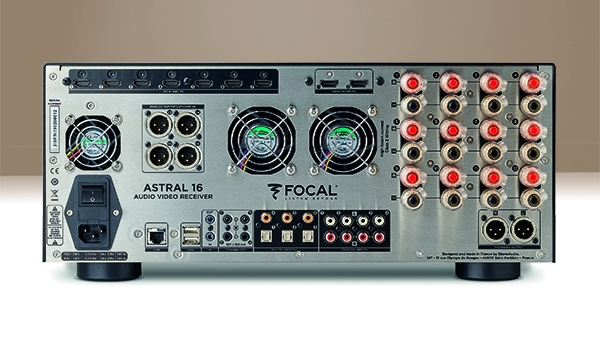
Before I go through the installation and calibration of the Astral 16, I’ll run through all the connections at the rear. These are fairly straightforward with the emphasis on seven HDMI inputs and two mirrored outputs, all of which support 4K/60p, HDR, HDCP 2.2, and, in the case of the first HDMI output, ARC as well.
There are also three optical and three coaxial digital inputs, along with eight analogue phono connectors that can be assigned as four stereo inputs or one 7.1-channel input. There are two USB ports (one for connecting a USB microphone and the other for service), an Ethernet port for the web-based UI (there's no built-in Wi-Fi), an IR input/output, and four 12V triggers.
There are also some fairly large fans at the rear of the Astral 16. These are essential for keeping the amplification and processing cool, but does mean this machine is fairly noisy. That’s no problem if it's located in an equipment rack somewhere else, but might be an issue if it’s in the room with you (as it was for me).
There are 12 amplified outputs (binding posts), and four balanced XLR pre-amplified outputs for additional channels if necessary (I used two for my active subwoofers). There’s also a pair of balanced XLR outputs for a stereo down-mix of whatever’s playing – perhaps for another room.
Once everything is connected, the real fun begins. The Astral 16 is obviously intended for professional installers, and the average punter might struggle with the more complicated aspects of its setup. However, a knowledgeable enthusiast will have a field day playing with the various settings, and the UI includes useful help buttons that explain each feature.
To set up the processor you start by creating a theatre mode, which involves choosing a speaker layout, defining the exact configuration, and assigning the channels. In my case I set up a 7.2.4-channel system with four overhead speakers and a pair of subs up front.
The menu allows you to assign the channels in any order you like, but since there are three individual power supplies that each drive four channels, it’s recommended you connect the front three speakers to channels one, five and nine, thus spreading the primary load across all three power supplies. I took that advice, and then allocated the remaining eight channels accordingly.
Focal includes a UMIK-1 USB mic, which can be used to calibrate the channels manually or automatically with Dirac Live. You plug the mic into the Astral 16, allowing it to generate test tones, provide a real-time frequency analysis, equalise each channel, and offer bass management to fine-tune the performance to suit your system and acoustical environment.
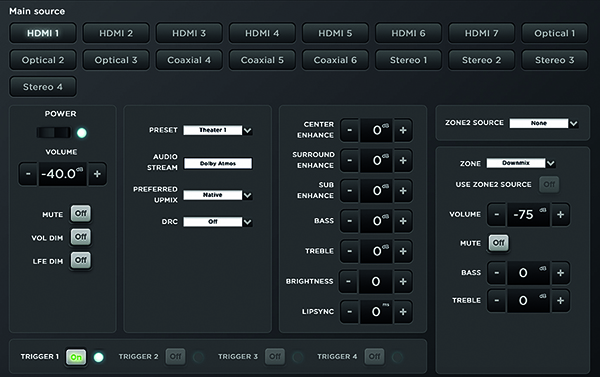
Those with the necessary skills can also integrate measurements from external correction tools like Room EQ Wizard. However, most people will plump for the automated wizardry of Dirac Live, which uses the mic and a laptop to take measurements and make adjustments based on the characteristics of the room, before loading the curves into the processor.
Focal Astral 16 performance
The Astral 16 supports every Dolby and DTS variant (apart from IMAX Enhanced DTS:X), and since Doctor Strange (Blu-ray) actually uses astral projection as a plot device, its lively DTS-HD 7.1 soundtrack seems like an appropriate place to start. The Focal's sonic presentation beguiles with an energetic and wraparound soundfield that helps sell the trippy visuals.
You can process a non-immersive soundtrack based on its native channels or upmix with a choice of Dolby Surround, DTS Neural:X and Auro-Matic. I generally found the first two worked best, creating a more enveloping experience that enhances the titular doctor’s adventures, especially during the climatic Hong Kong battle, where up and down become interchangeable.
I wasn’t running the Astral 16 in the correct speaker configuration for Auro-3D, which uses a different layout to Atmos and DTS:X with height rather than overhead channels. That might be why Auro-Matic didn’t dazzle as much as the Dolby and DTS upmixers, but I used my Blu-ray of Pixels to check the Focal does indeed decode Auro-3D. In fact, considering the difference in speaker layout, the battle with Pac-Man sounded particularly good.
My time with the processor coincided with the 50th anniversary of Apollo 11, so I popped on HBO series From the Earth to the Moon (Blu-ray), with its new Atmos tracks. I was struck by the overall cohesion of the Astral 16’s presentation, with the powerful built-in amplification creating an immense hemisphere of sound. The first episode includes a Mercury rocket launch with all the low-end rattle you’d expect, while an accident on a Gemini mission involves the spaceship tumbling uncontrollably. Effects are steered with such precision that sounds whoosh fluidly from channel to channel, disorientating you as much as the astronauts.
The second episode concerns the Apollo 1 fire, and after the terrible accident is delivered with hair-raising impact, the rest is more subdued, taking place in committee rooms and aircraft hangars. The Astral 16 creates a spaciousness that makes the environments completely believable.

As good as TV soundtracks are these days, it still takes a modern blockbuster to give a system an acoustical shake-down and Shazam! (4K Blu-ray) is just the ticket. This soundtrack keeps things low-key and realistic when dealing with child hero Billy Batson, but as soon as he says the magic word the entire soundstage is energised, with low frequencies accompanying every hit and fall. The Astral 16 and its Dirac EQ skilfully integrates both my subwoofers, managing the crossovers to provide an ultra-sonic experience with bass that is felt in the pit of your stomach.
A later scene involving an upturned bus reveals the processor's ability to simultaneously orchestrate all my 13 channels, including the overheads. There are sounds of falling objects that emanate for all around, including above. And there is a definite benefit when engaging the Dirac EQ – individual effects become more pronounced and the adverse effects of my room evaporate.
The new UHD Blu-ray of Waterworld impresses with a full-bodied DTS:X remix. The attack on the atoll illustrates the kind of bold and cinematic soundscapes the Focal can produce. As the Smokers encircle the atoll, their machine-gun fire has a thrillingly percussive kick, and bullets rip through the metallic structure. Jet skis roar convincingly overhead and explosions are delivered with gusto.
There’s plenty of bass running through the entire film, in part because of James Newton Howard's drum-dominated score. This is given a solid foundation by the Astral 16, while the built-in amplification showcases reserves of power, easily driving all the channels at once. Subtle effects generate the feeling of being isolated and at sea – water laps and wind rustles through sails – and once again the EQ brings these effects to the fore. Meanwhile, the all-channel soundscapes of the film's underwater sequences are presented with water-logged realism.
Focal Astral 16 verdict
Overall, this is a bit of a beast; a state-of-the-art processor that assimilates each component of a system and applies cutting-edge calibration to ensure a flawless audio experience. It certainly isn’t affordable, and will be too frighteningly complex for most people – it demands a professional setup – but the inclusion of 12 channels of potent amplification sets it apart from much of the custom install competition. Value for money is always relative, but if you have the budget this high-end AV processor and amplifier is a sonic superstar.
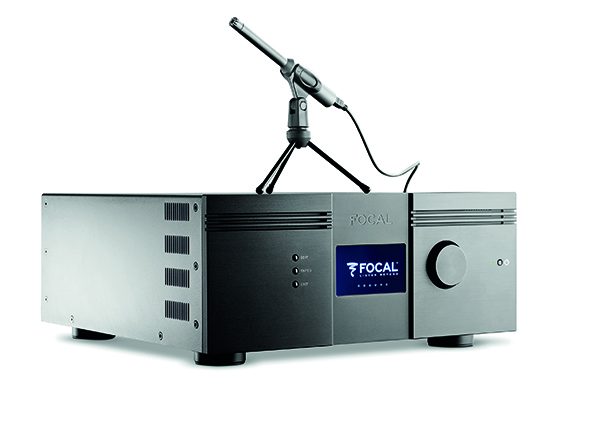
Specification
Dolby Atmos: Yes
DTS:X: Yes
IMAX Enhanced: No
Multichannel input: Yes. 7.1 phono audio inputs
Multichannel pre-out: 4 x XLR
Power output (claimed): 12 x 200W (into 8 ohms)
HDMI: 7 x inputs; 2 x outputs
AV inputs: 6 x digital audio (3 x optical and 3 x coaxial); 4 x analogue stereo
Multiroom: Yes
Video upscaling: No
Dimensions: 479(w) x 490(d) x 191(h)mm Weight: 20kg
Features: iPad remote app; web-based setup and control; Dirac Live room correction; calibrated microphone supplied; IR in and out; 4 x 12V triggers; Ethernet; 2 x USB ports; RS232 serial connector; support for Crestron, Control4, Savant and RTI; Auro-3D support; HDMI 2.0/HDCP 2.2; HDMI eARC; Room EQ Wizard integration; parametric EQ on every channel; theatre/audio zone presets
 |
Home Cinema Choice #351 is on sale now, featuring: Samsung S95D flagship OLED TV; Ascendo loudspeakers; Pioneer VSA-LX805 AV receiver; UST projector roundup; 2024’s summer movies; Conan 4K; and more
|



